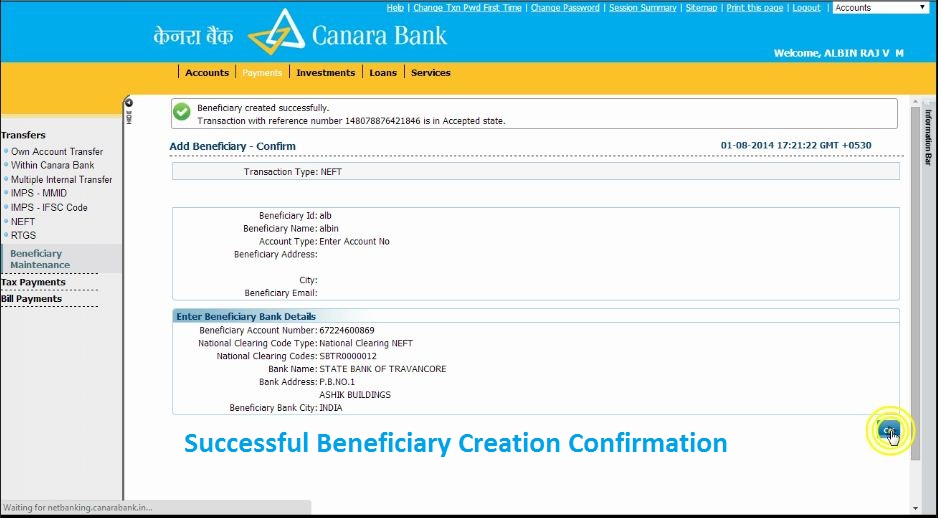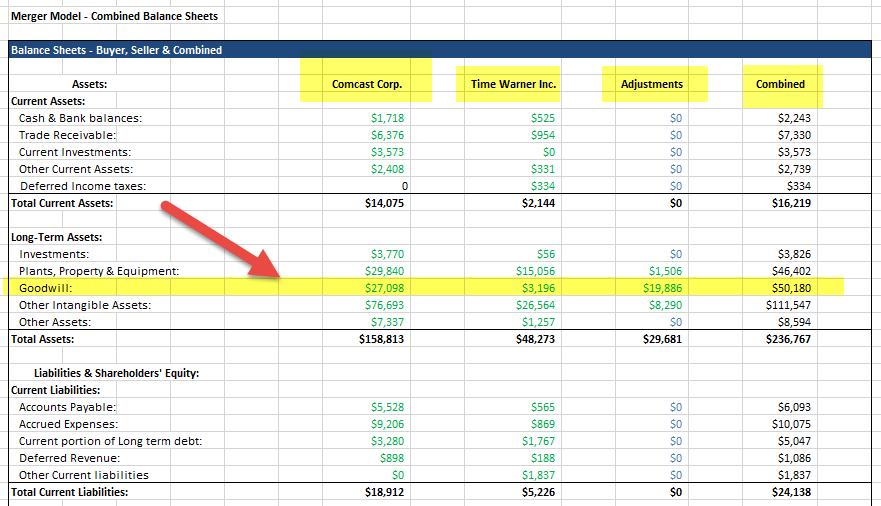

Helping you navigate the world of insurance by bringing you expert advice and all the current information you need to make the best insurance decisions for you, your family and your business. The Commissioner’s Reserve Valuation Method was established by the Standard Valuation Law , which was created by the NAIC and adopted by the different States shortly after World War 2. The first mortality table prescribed by the SVL in 1941 was the commissioner’s standard ordinary table. Free reservesmeans free reserves as defined in definition No. 43 in Companies Act, 2013. Free reservesmeans the free reserves as defined under Section 2 of the Act. Maintaining SR ensures the smooth running of business even in case of heavy claims lodgement periods.
The company’s insurance may be on the hook for ongoing costs related to surgeries or other chronic care that would be impossible to account for the day or even month of the initial incident. The RBC formula is complex and nuanced, but the key aspect is that it essentially establishes a protocol for determining not just the XYZ calculation of outstanding claims, but also a consideration for the risks an insurer takes on. So, an insurer that’s underwriting more risk may need closer to 110 or 115 percent of claims.
When the central bank wants to increase the money supply in the economy, it lowers the reserve ratio. Hence it enables the Central Bank to control the number of advances the banks can create. In case equity shares are bought back out of free reserve, amount equal to face value of equity shares bought back should be transferred to ___________. Buyback of equity shares in any financial year shall not exceed 25% of its __________ . The reserve, which is not a free reserve for the purpose of buyback of shares, is ___________ .

The insurer would then be forced to hold a certain amount of its annually collected premiums to offset the soaring claim costs. By keeping a statutory reserve, the insurance company can manage all its risks and operate more efficiently. The capital reserves, revaluation reserves, debenture redemption reserves, securities premium and statutory reserves are non free reserves. The capital reserves, revaluation reserves, debenture redemption reserves, securities premium and statutory reserves do not form a part of free reserves. Regardless of the approach used to calculate them, statutory reserves will generally cause insurance companies to lose out on some potential profits. However, they benefit the insurance markets as a whole by making insurance customers more confident that their insurers will be able to withstand difficult economic circumstances and stand behind their policies.
Excess reserves, on which the Fed pays interest, are reserves that exceed these requirements. Borrowed reserves are those that banks borrow from the Federal Reserve at the discount rate. As of March 26, 2020, reserve requirements for banks of all sizes went down to 0%. Every company giving loan or giving a guarantee or providing security statutory reserve is free reserve or making an acquisition under this section shall keep a register which shall contain such particulars and shall be maintained in such manner as may be prescribed. A company which fails to comply with the provisions of sections 73 and 74 shall not, so long as such failure continues, declare any dividend on its equity shares.
A public announcement shall be made at least 7 days prior to state of buy-back. Under the circumstances, the company may buy shares from a shareholder who possesses a large number of shares and wants to sell it at a negotiated price fixed for the purpose. If buy-back is made from free reserves a sum equal to the nominal value of shares so bought must be transferred to Capital Redemption Reserve. States still mandate that IBNR costs be counted as liabilities in audits and carrier self-reporting, which is a significant piece of the discussion of funding liabilities and maintaining capital.
Examples of free reserves in a sentence
P&L A/c is a free reserve and so the surplus standing to it will be considered for loan purpose under section 372A of the Companies Act. This is also subject to some situations in which even borrowed funds can be used for such purposes. The discussion on capital requirements, statutory reserves, and such is much easier if you first understand that, ultimately, insurance companies make their money from investing insureds’ premium payments in the market, in stocks, bonds, and other financial instruments. However, unlike insurance, the stock market’s returns aren’t guaranteed. So, if there’s a market downturn, an insurer might be forced to sell its shares at a loss – not a good long-term plan. The statutory reserve requirement is the tool for managing the liquidity of the organization.
Statutory reserves are the funds that state insurance regulators require the insurance companies operating in their state to maintain at any given time. The purpose of statutory reserves is to help ensure that insurance companies have adequate liquidity available to honor all of the legitimate claims made by their policyholders. By maintaining a statutory reserve of cash, near-cash, or other liquid marketable securities, an insurance firm can still fulfill its financial and legal obligations to pay out claims even if it operates under a loss. Additionally, in the event of a calamity that results in an unusually high volume of claims, the insurance firm can dip into these reserves to pay these claims in full and in a timely way to ensure consumers are not affected. Subject to document-based limitations on assessment increases, the board decides how much to include in the reserve account as part of its regular budgeting process. The association is obligated to prepare an annual budget reflecting annual operating expenses, including estimated revenues and expenses for the year.
- The most significant difference is that these accounts are not mandatory and do not have be maintained or waived according to the Homeowners’ Association Act .
- Insurance companies collect insurance premiums from their customers and then invest those premiums in their general account to generate a return on investment .
- The governing body or the State decides the amount of money or assets that an organization is required to maintain a statutory reserve.
- In the U.S. life insurance industry, statutory reserves are most commonly computed using the Commissioner’s Reserve Valuation Method, or CRVM, the method prescribed by law for computing minimum required reserves.
This process shall continue until such reserves reach half of the capital and, thereafter, the general assembly shall decide to give all accrued net profits to all partners. However, this particular money which should have been added to the statutory reserve should be identified in the company records so as to be distributed to shareholders in the years when the company does not achieve sufficient net profits to reach the rate specified in the AoA. Securities Premium Account includes the premium received on issue of shares, debentures, bonds but after adjusting expenses relating to issue of shares. Whereas, Share Premium Account includes premium received on equity and preference shares. Thus Securities Premium Account is used in a boarder sense of the term than Share Premium Account. Free Reserve means the reserve which is free for distribution of dividend as per last Balance Sheet and which includes the credit balance of Securities Premium also.
What Does Statutory Reserve Mean?
Maintaining statutory reserves requires conscious efforts by the organization, which results in a shift of focus from profit-making to maintaining reserves to avoid legal penalties and actions. The primary advantage of maintaining a statutory reserve is that it enables one to make payments for the obligations or claims due shortly, even if the business is not making any profits. The principle-based approach allows leeway to the organization to maintain the statutory reserve. The statutory reserve that needs to be maintained is calculated either by a rule-based approach or a principle-based approach. It is a legal reserve that must be maintained by the standards set by the regulating body for the sector, which may vary from country to country.

Companies create voluntary reserves of their own accord to meet future exigencies such as dividend equalisation reserve, depreciation reserve, and debenture redemption fund, etc. All public joint stock companies are legally required to deduct 10 per cent of the net profits of the company to create a statutory reserve. Out of the proceeds of fresh issue of equity shares buy-back of shares is not allowed but proceeds from the issue of preference shares cannot be utilised. Similarly, proceeds from the issue of bonds, Secured/Unsecured loans, convertible debentures may be taken for the purpose of Buy-back of shares. In this way, the reserve system functions similarly to a savings account in personal finance. The market is where you’ll see passive income and gains being made, but it’s not where you’ll turn if you have a costly car repair, appliance replacement, or other high-dollar immediate need.
What are Statutory Reserves?
The statutory reserve gives assurance to the investors that the amount they are going to invest in the products of the company is secured by means of reserves i.e. it helps to build trust among the customers and clients. The reserve ratio is the portion of reservable liabilities that commercial banks must hold onto, rather than lend out or invest. Statutory reserves are evaluated using two methods, namely, the rule-based approach and the principle-based approach. Reserve requirements are designed as “precautionary measures” to control the economy and not to stop banks from “excessive” profit and not to force the banks to have sufficient cash to meet their day-to-day requirements.
It is the method prescribed by law for computing the statutory reserve which every insurance company has to adhere to, failing which the insurance company might attract legal actions and penalties. Therefore, in context of obtaining of loan or credit facility by a borrower, and granting of loans or credit facility by a money lender or financier current value of security is very much relevant. Any appreciation in value of security should therefore be considered as ‘ free reserve’ or ‘net worth’ of borrower. This concept can equally be applied even in case of a company, as per provisions, context and purpose seeking approach. In provisions related to above situations, there is requirement that only free reserves should be considered besides there is, in respective provisions specific restrictions on use of revaluation surpluses on revaluation of assets or liabilities. When an insurance company chooses to keep reserves that are in excess of the minimum amount required under the rules-based approach, these are referred to as non-statutory or voluntary reserves.
This can be done either by a vote at a duly called meeting or by written consent. Like developer-established reserve accounts, under this method, the vote must designate the components for which the reserves are to be used. In the years following the approval, the board must include the required reserve accounts in the budget and continue to do so every year after that. The Commissioners Reserve Valuation Method is the most commonly used method to calculate the statutory reserves in the Life insurance industry.
More Under Company Law
Another tool is the Statutory Liquidity Ratio which requires the banks to maintain a given fraction of their total demand and time deposits in the form of specified liquid assets. In case of gains on sale of properties on capital account also the earned gains are considered as part of free reserves. Statutory Accounting Principles are the set of accounting rules prescribed for the preparation of an insurer’s financial statements. Companies generally retain their excess profit under Profit and Loss Account or Surplus Account rather than transferring it to any reserve of the Company under Companies Act, 1956. The main advantage of doing so is that the company would be able to freely distribute its profit as dividend from the Surplus rather than carving out an amount from the Free Reserves which would require compliance of provisions pertaining to dividend.
It allows the use of a company-based experience and its level of credibility to determine the reserve amount. Buyback of equity shares conditions are specified by section ________ of the Companies Act. No company which is in default in the repayment of any deposits accepted before or after the commencement of this Act or in payment of interest thereon, shall give any loan or give any guarantee or provide any security or make an acquisition till such default is subsisting. Every special resolution passed by the company in general meeting in relation to the exercise of the powers referred to in clause of sub-section shall specify the total amount up to which monies may be borrowed by the Board of Directors.
If legislature would have intended to have such a situation then they would have used the word net worth rather than using the word paid up share capital and free reserve. Companies thus would require re-thinking, not only for the purpose of giving dividend but also for various others factors in order to retaining profit in surplus rather than transferring the same to reserves. Since retaining profit forward may hinder decision making ability of the Board of the company. Prior approval of share holders by means of special resolution has to be sought.
However, the number of policy claims is expected to increase as time goes by, consequently increasing claim costs. Still, policyholders expect an insurance company to keep its word in the event that the insured risk occurs. To prevent this from happening, state insurance regulators enforce minimum levels of liquidity that insurance companies must maintain. These statutory reserves can either be held in cash, or in readily marketable securities that can be converted into cash reliably and on short notice.
Example of Statutory Reserves
Individual states are mandated to regulate virtually all aspects of insurance, ranging from financial solvency to market practices and taxation. The legislation provided a narrow antitrust exemption to promote fair competition by allowing insurers to exchange vital information regarding losses and other factors, facilitate oversight of state guarantor funds, and allow states control over liquidation. “free reserves” means those reserves which, as per the latest audited balance sheet of the company,are free for distribution as dividend and shall include balance to the credit of the Securities Premium Account but shall not include Share Application Money.
Free reserves rose to unprecedented levels following the financial crisis, when the Fed offered to pay interest on banks’ excess reserves. This development coincided with an unprecedented cut in the federal funds rate to near-zero, but these policies have not spurred inflation because of a prevailing deflationary environment. The increase in Fed liabilities caused by rising free reserves has been more than balanced out by the assets the Fed created through quantitative easing. A statutory reserve is a pool of funds that insurance companies are required by law to hold as a guarantor of liquidity in order to remain solvent and financially stable. Though , as per definition of ‘free reserves’ , share premium is not ‘free reserve’ because dividend cannot be declared out of share premium.
As a result, when individuals stormed banks to withdraw their cash on hand, the banks had already lost billions of dollars in investments. The state regulatory system makes different demands, depending on the state and insurance products. The requirement of statutory reserves is necessary to protect insurance companies from becoming insolvent. Exceeding sixty per cent of its paid-up share capital, free reserves and securities premium account or one hundred per cent of its free reserves and securities premium account, whichever is more.
Provided further that any dividend payable in cash may be paid by cheque or warrant or in any electronic mode to the shareholder entitled to the payment of the dividend. In such cases, there is no sense in considering cost or book value for the purpose of evaluating security provided by such assets. Free reserves means such reserves which are available for distribution as dividend. These balances, together with share capital, constitute net worth of the entity. Dividend equalisation reserve is a specific, voluntary, revenue reserve. A buy-back offer shall not remains open for more than 30 days—except in case of purchase through stock exchange.
